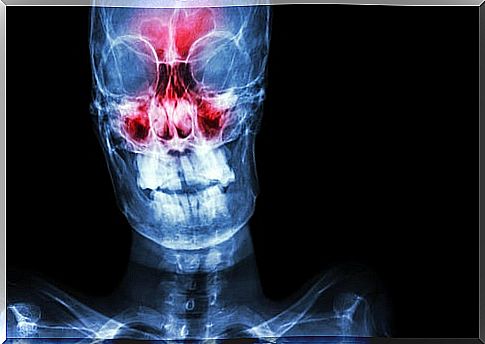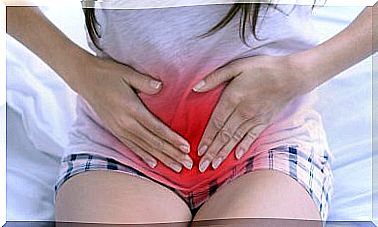Maxillary Sinusitis: Symptoms And Treatment
Maxillary sinusitis is an inflammation and obstruction of the paranasal sinuses, which are small holes filled with air. It usually occurs as a consequence of the common cold, however, fungal, bacterial or viral infections, and allergic processes can also be the cause.
The paranasal sinuses are divided into the frontal sinuses (which are those found in the front of the skull, that is, on the forehead), the ethmoid (the sides of the nose), and the maxillary sinuses (they are on the cheeks).
In normal situations, when a person breathes, the air passes through these sinuses without problem, but when they suffer from maxillary sinusitis, some of these sinuses are blocked, causing the patient to suffer discomfort and breathing difficulties.
Types of maxillary sinusitis

Depending on how it evolves, two types of sinusitis are distinguished. On the one hand there is the acute maxillary sinutysis and on the other the chronic maxillary sinusitis.
As for the first, it should be noted that the symptoms of the disease do not persist for more than four weeks. It usually appears as a result of an upper respiratory infection.
To diagnose it, the doctor has to look at certain clinical signs such as the presence of fever, nasal congestion, purulent rhinorrhea (secretion and subsequent expulsion of abundant fluid through the nasal passages that is formed in the nasal mucosa) and pain or facial heaviness on both sides of the face.
Chronic maxillary sinusitis is characterized by causing symptoms that last more than three months. However, the diagnosis of this is more difficult, since there are no well-defined diagnostic criteria. Both bacterial and fungal infections are also usually the cause of its development.
Causes and prevention
Although we already know some of the causes for which this disease can appear, there are many more that can also cause it. The excess of mucus and the blockage of the paranasal sinuses make that the microorganisms can reproduce more easily, favoring the appearance of sinusitis.
Therefore, apart from the different infections and allergic processes, these are other causes that cause plugging and mucus secretion:
- Allergic rhinitis.
- Have a deviated septum.
- Smoking: tobacco is also a risk factor for this disease.
- Cystic fibrosis: it is a risk factor that increases the possibility of suffering from this pathology.
- The hair inside the sinuses (cilia) does not fulfill their function of removing mucus due to a condition.
By knowing all these causes, we can imagine the measures or behaviors to carry out to try to prevent maxillary sinusitis. On the one hand, it is recommended to drink a lot of fluids, specifically water, to avoid clogging the sinuses. If you often have congestion or abundant mucus, an effective measure is to use a humidifier at night, when you go to sleep.
As tobacco is a risk factor for suffering from it, avoiding it will therefore be a fundamental preventive measure. For a respiratory infection, use decongestant medications. And finally, in the event that you are an allergic person and you begin to notice symptoms, take the appropriate medication as soon as possible.

Main symptoms
The most common symptoms caused by maxillary sinusitis can vary depending on how advanced the pathology is. Despite mentioning quite a few, it must be borne in mind that one of the most alarming is fever. In short, the most common symptoms that sinusitis can trigger are:
- Fever.
- Fatigue.
- Facial pain
- Headache.
- Nasal discharge and obstruction.
- Cough that is usually worse at night.
Apart from these, it is also common to feel pain and pressure behind the eyes and in the maxillofacial area, loss of sense of smell and a sore throat with a drip between the nose and pharynx. In acute sinusitis, these symptoms usually appear on the 7th day after a cold that has not progressed correctly. If, on the other hand, the sinusitis is chronic, the symptoms will be the same but milder.
Treatment of maxillary sinusitis
The treatment of this pathology will depend, mainly, on the cause that produces it. Normally, when sinusitis is acute, it goes away on its own for some time. In case it is caused by an infection, its treatment requires the administration of antibiotics for approximately 14 days.
In the event that antibiotic therapy fails, surgery can be used to remove the pus and clean the area.

When sinusitis is chronic, it should be treated for 3 or 4 weeks. If it is caused by a fungal infection, specific treatment for fungal infections should be carried out .
Another treatment option is to use nasal sprays that contain corticosteroids and antihistamines, which aim to reduce swelling in the case of nasal polyps.









